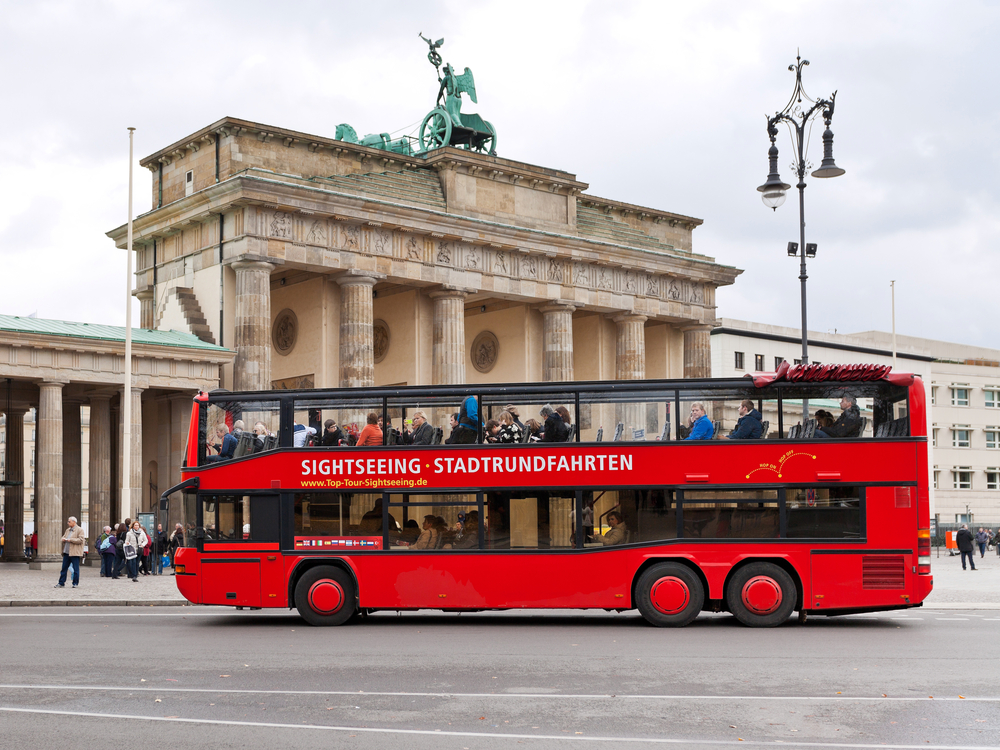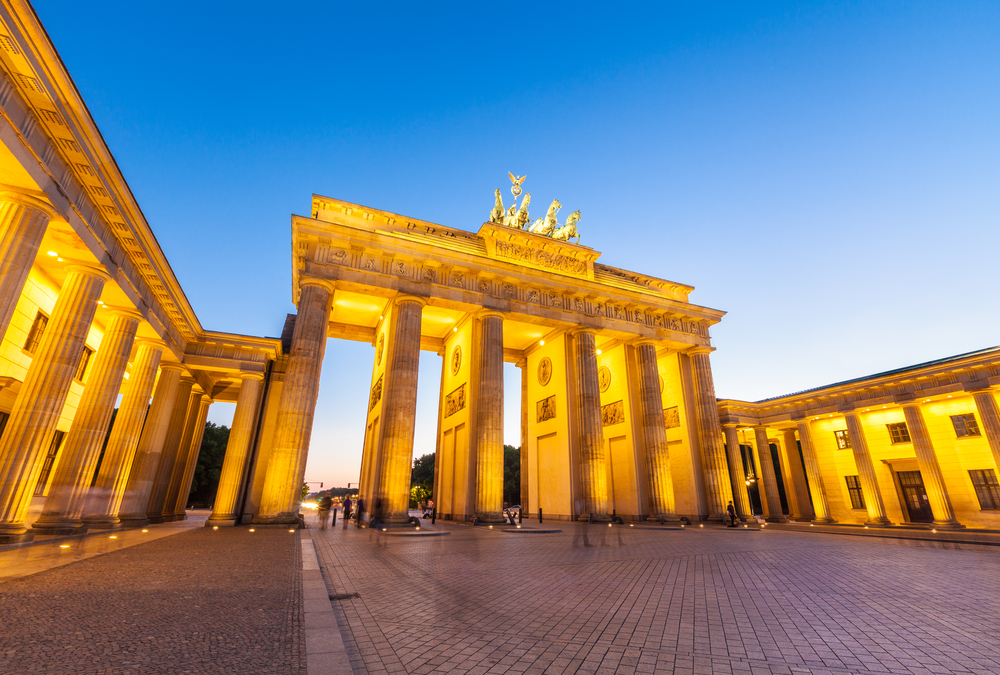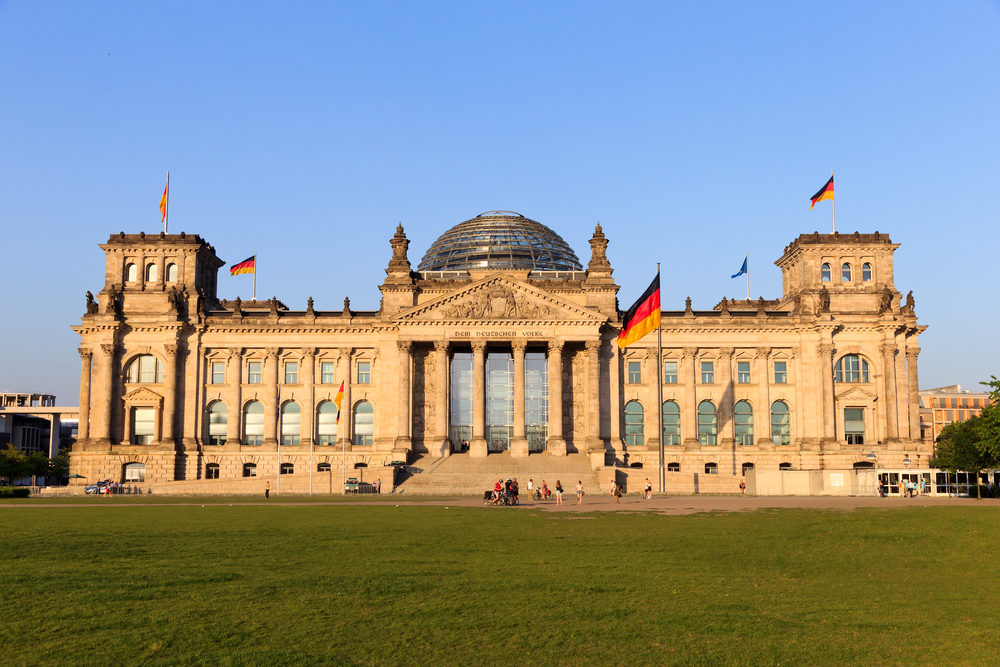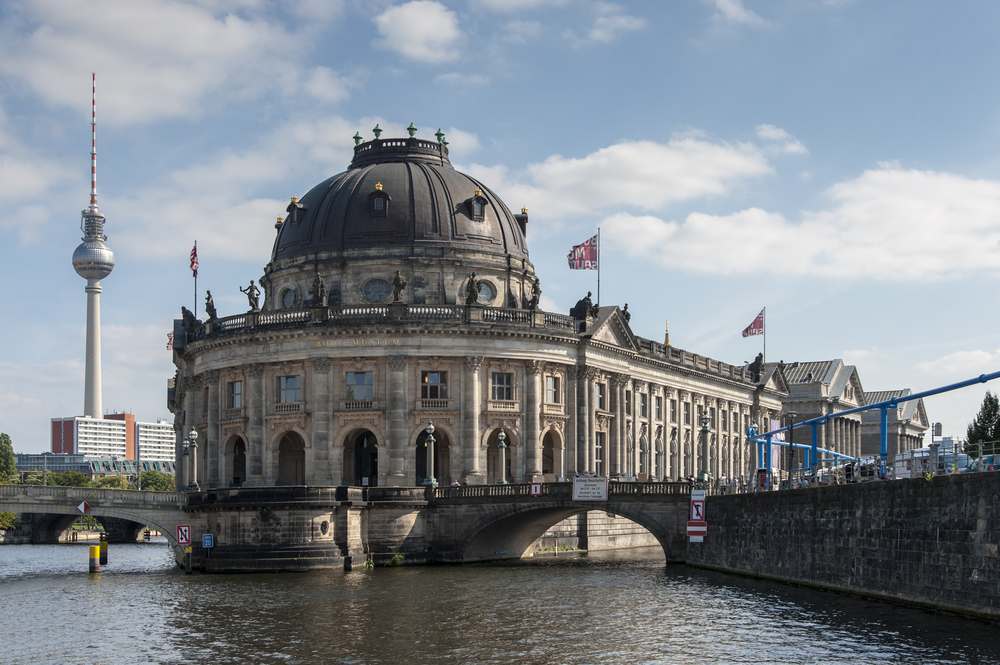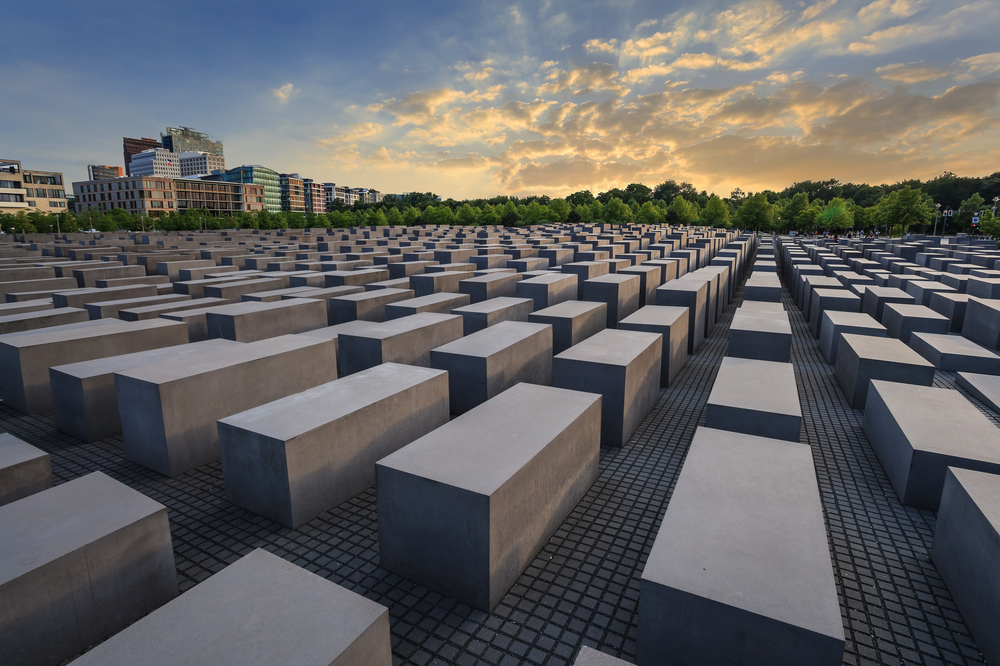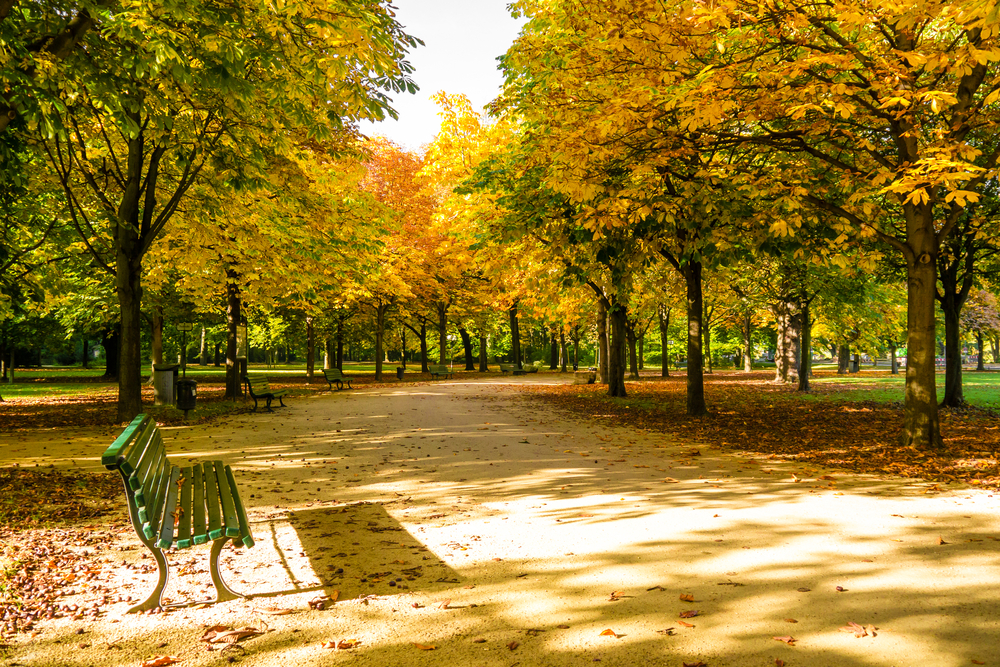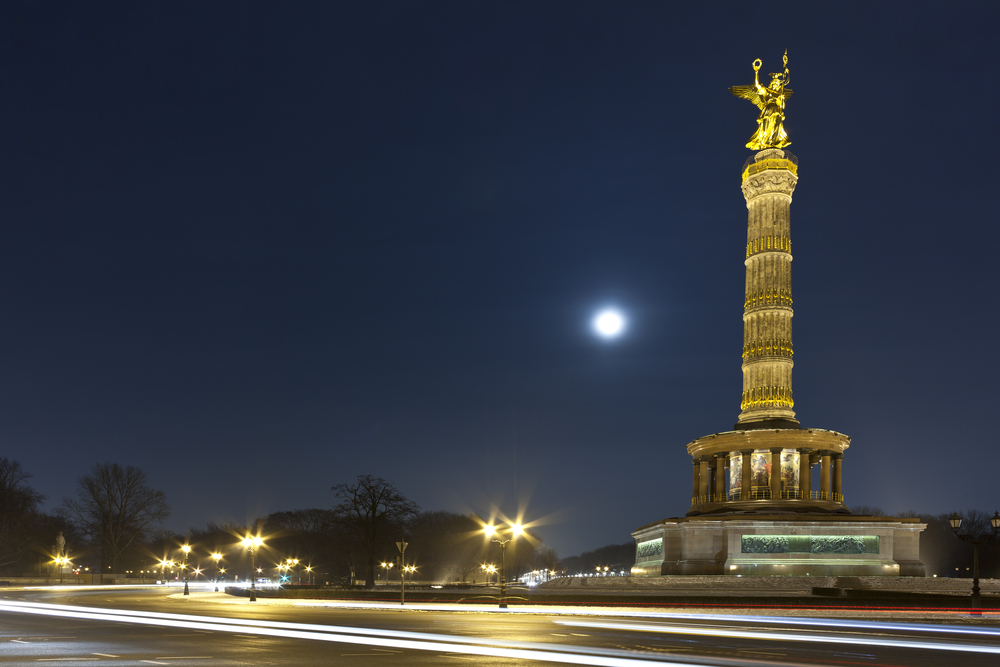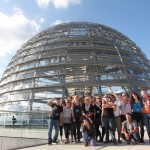No extended stay in Germany is complete without at least a weekend trip to the capital, Berlin. Since the reunification of West and East Germany, Berlin’s dual position – as the cultural heart of modern Germany and head of its political center – is firmly fixed. Berlin manages to be a modern bustling newly developed city without losing any of the historical significance of its turbulent past. Use our guide to the Top 20 Tips to see in Berlin and you will manage to capture the essence of this cosmopolitan city.
1. The Reichstag Building
The Reichstag Building is the seat of German Parliament and one of the most iconic sites of modern, reunified Germany. Since its construction in 1884, this historic building has chronicled some significant periods in Germany’s history – from the first unification of Germany under Emperor Wilhelm I, through the dark days of the Third Reich, through its defunct position during the Cold War and finally to the peace and prosperity of today.
A visit to the Reichstag is a must. Spectacularly restored by British architect Sir Norman Foster in 1999, highlights include a lift to the top of the building to a large viewing terrace for the breathtaking views of Tiergarten, the dome and the mirror cylinder at the centre.
The best time to visit the Reichstag is in the late afternoon or evening: The lines are usually shorter, and the view from the glass dome at sunset is spectacular. The Berlin Reichstag is the only parliamentary building in the world that features a public restaurant; Restaurant Kaefer and its roofgarden are located on the top of the Reichstag, offering breakfast, lunch and dinner at reasonable prices – breathtaking views included.
2. Bradenburg Gate
One of the first landmarks that comes to mind when thinking of Berlin is the Brandenburger Gate. In the course of German history, the Brandenburg Gate played many different roles; it reflects the country’s turbulent past and its peaceful achievements like no other landmark in Germany. During the Cold War, the Brandenburg Gate stood between East and West Berlin and was the sad symbol for the division of the city and Germany. It drew visitors who used to climb an observation platform in order to get a glimpse of the world behind the Iron Curtain, on the other side of the barren “death-strip” which separated east from west Berlin, geographically and politically. ”
It was here, where Ronald Reagan said his moving words: “Mr. Gorbachev, tear down this wall!”
When Germany was reunified following the fall of the Berlin in November 1989 the Brandenburg Gate quickly reinvented itself into the New Berlin’s symbol of unity.
3. Museum Island
Berlin’s Museum Island is home to five world-class museums, which cover everything from the famous bust of Egyptian Queen Nefertiti, to European paintings from the 19th century. This unique ensemble of museums and traditional buildings on the small island in the river Spree is a UNESCO World Heritage site. It includes The Pergamon Museum, which houses the Collection of Classical Antiquities, the Museum of the Ancient Near East, and the Museum of Islamic Art. The highlights of the Pergamon Museum are the original-sized reconstructions of archaeological buildings: the monumental Pergamon Altar, the Market Gate of Miletus, and the Ishtar Gate make the Pergamon Museum one of the most visited museums in Germany.
4. The Jewish Museum
Berlin’s Jewish Museum chronicles Jewish history and culture in Germany from the Middle Ages to present-day. The extensive exhibition is great – but it is mostly the building, designed by Daniel Libeskind, which leaves a lasting impression on its visitors. The striking architecture is defined by a bold zigzag design, underground tunnels connecting the three wings, irregularly shaped windows, and ‘voids’, empty spaces stretching the full height of the building – the architecture makes palpable the feelings of those who were exiled and lost. Permanent exhibitions at the museum are dedicated to the history and life of German Jews.
5. The Anne Frank Center
The Anne Frank Center is located directly adjacent to the Hackesche Höfe in Berlin’s Mitte district. The main exhibition ‘Anne Frank. Here & Now’ is focused around the diary and life story of a young Jewish girl, who fled from Frankfurt to Amsterdam with her family in 1933, and lived in hiding in a back building between 1942 and 1944. Photographs illustrate Anne Frank’s life story, highlighted by interviews with her father, her classmate, and a helper.
6. The Stasi Museum
Booking.com
The Berlin Stasi Museum is known locally as the “Research and Memorial Site Normannenstrasse”, tells the story of the infamous secret police of East Germany, an important tool of the dictatorship. Opened in 1990, the museum is set within the offices of Erich Mielke, the head of Stasi from 1957 to 1989. The office was home to 8,000 employees and some rooms have been preserved in the same condition as they were during the Stasi occupation of the building, giving visitors a good understanding of what life was like for those working there. Exhibitions detail the structure of the Stasi as well as methods it used within the society and the organisations demise.
7. The Berlin Wall
The last remaining remnants of the Berlin Wall continue to draw thousands of tourists annually to the city. Euphoric Berliners almost completely destroyed the walls, barriers, checkpoints and death strips in 1989 following the downfall of the DDR (Deutsche Demokratische Republik/East Germany). Today, where once stood barriers and watchtowers, instead stands memorials and monuments and art installations to symbolise what once separated East and West.
Despite it’s demise, there’s still much to see and experience of what remains and there are some key sites where you can fully appreciate the impact of this divide. For example the Berlin Wall Memorial to the north of Rosenthalerplatz in Mitte at the former Bernauerstrasse crossing to the Wannsee lake. There’s lively street art at the East Side Gallery near Kreuzberg as well as one of the longest stretches of surviving wall at almost 1.3km, while at Niederkirchnerstrasse, a structure stands, pockmarked, shredded and preserved behind wire in the shadow of the imposing Martin-Gropius Bau in the heart of the city.
The Berlin Wall Trail follows the entire 160km former route the Wall took to encircle West Berlin between 1961 and 1989. Many of the key stop-off points in the city itself feature handy listening posts, plaques, maps and explanatory information panels, whilst some of the many victims of failed escape attempts are remembered with 29 tributes along the way.
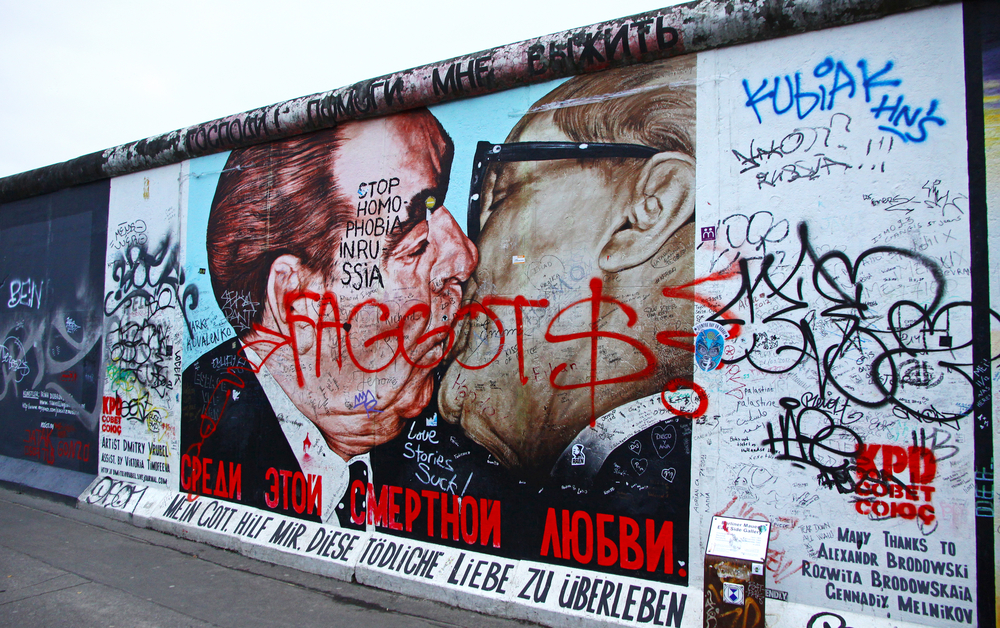
8. Holocaust Memorial
Berlin’s Holocaust Memorial can be found on a stretch of the former “death strip”, where the Wall once stood near the Brandenburg Gate. It’s Berlin’s monument to the Holocaust, dedicated to the Jewish victims of the Nazi genocide of World War II and it took 17 years to complete. US architect Peter Eisenmann conceived the winning design consisting of 2711 rectangular blocks of concrete laid out in grid formation, recalling tombstones. The monument is open day and night so it’s possible to visit and quietly reflect upon it’s meaning at all times.
Impressively vast, it includes an underground Information Centre on the south-eastern side of the memorial grounds. The Information Centre includes personal documentation about individuals and families and holds the names of all known Jewish Holocaust victims. Documenting the universal issue of genocide, the centre represents a central focus on the diverse memorial sites across Germany which stress the living memory aspect of remembrance. In Berlin an example of this is the Stolpersteine (tripping stones) initiative – plaques on street pavements, usually outside the house’s main entrance, commemorating deported Jewish residents.
9. Tiergarten Park
The Tiergarten (animal park) and former hunting ground is Berlin’s best known park because of its centrality it’s a favourite with locals and visitors, wonderful for a stroll, a breath of fresh air, a picnic, cycling or a jog or just kicking a ball around. Today the area includes the Regierungsviertel (Government Quarter), Potsdamer Platz and the Kulturforum as well as the Diplomatenviertel (Diplomatic Quarter).
Berliners make good use of the park for outdoor activities, sports and football games and grilling on Sundays is very popular. A large playground or Spielplatz is located on the southeastern corner near Potsdamer Platz. Some winters it is even possible to skate on the small lakes inside the park if weather conditions allow.
10. Victory Column
Berlin’s Siegessäule – Victory Column – is another of Berlin’s monuments that has reinvented itself through the ages – from a symbol of Prussian military victory in the 19th century to a favourite tourist spot today. U.S. Presidential candidate, Barack Obama chose the Siegessäule as the alternative spot to the Brandenburg Gate for his speech to 200,000 Berliners on July 24, 2008.
The 67m high symbol of victory originally stood in front of the Reichstag in the former Königsplatz and today’s Platz der Republik. It was relocated here, in the Tiergarten’s main roundabout by the Nazis in 1938.
The monument is reachable using a pedestrian underpass. Four neo-classical temples also built by Albert Speer indicate the entrance points. This is one of Berlin’s favourite sightseeing trips with children and youngsters who appreciate the view from the observation deck following the 270 steps required to reach it via a spiral staircase. The Café Victoria and Biergarten, just next to the monument, is ideal for refreshments and a break.
11. Check Point Charlie Museum
Checkpoint Charlie, along with Glienicker Brücke (Glienicker Bridge) was the best known border-crossing of Cold War days. The sign, which became a symbol of the division of Cold War Berlin and read like a dire warning to those about to venture beyond the Wall “YOU ARE NOW LEAVING THE AMERICAN SECTOR” in English, Russian, French and German – stood here. It is today an iconic marker of territorial boundary and political division. Until the fall of the Berlin Wall on November 9, 1989, it signified the border between West and East, Capitalism and Communism, freedom and confinement.
Historically, the site is important because from 1961 to 1990 it functioned as the main entry and departing point for diplomats, journalists and non-German visitors who used to be allowed to enter East Berlin on a one day visa after exchanging their Deutsch Marks on a one-to-one basis for East German currency. More dramatically, US and Soviet tanks had a close encounter here in October 1961 when J.F. Kennedy and Nikita Khrushchev’s tanks faced each other in an acrimonious moment feared around the World as a possible lead up to World War III.
Reconstruction has included a US Army guardhouse and a copy of the original border sign. Cobblestones mark the exact spot of the former border and the poignant photograph by Frank Thiel of an American and Soviet soldier can be seen here. Memorabilia includes the nearby Café Adler (eagle), a hotspot for journalists and spies in the past where informers met their counterparts.
Exhibitions at the museum detail the history of the Berlin Wall and incidents surrounding it including dramatic stories of escape attempts some by hot air balloon, chairlifts and even a small submarine. The original Checkpoint sign is exhibited here.

12. Berliner Dom
The Berliner Dom (Berlin Cathedral), completed in 1905, is Berlin’s largest and most important Protestant church. First built in 1465 as a parish church on the Spree River it was only finally completed in 1905 under the last German Kaiser -Wilhelm II. Damaged during the Second World War it remained closed during the DDR years and reopened after restoration in 1993.
The “old” Cathedral at the Lustgarten was initially constructed between 1747 and 1750 under Friedrich the Great (1740-1786) as a baroque church. From 1817 to 1822 Karl Friedrich Schinkel redesigned it but the Cathedral retained its stylistic similarity to the high-renaissance baroque architecture of St. Peter’s Cathedral in Rome. When Wilhelm II ascended the throne in 1888 he authorised the demolition of the “old” Cathedral and the construction, began in 1893, of the much larger, imposing present Berliner Dom.
13. Hackseche Höfe
Berlin’s Hackesche Höfe (courtyards) – just off S-Bahn Station Hackescher Markt, is a heritage site consisting of eight linked, restored rear courtyards accessible through Rosenthalerstrasse 40’s main arched entrance. The area, also known as the Scheunenviertel is one of Berlin’s top entertainment hubs, popular with Berliners and visitors alike and a magnet for club-goers since the 1990’s.
Since the 1990s the area around Hackesche Höfe has been synonymous with the vibrant urban renewal of the New Berlin, combining a mix of business and offices, residential housing, entertainment venues, art galleries, boutiques, bars and restaurants.
A walk around the area must include the Grosse Hamburger Strasse with the oldest Jewish cemetery – Alter Jüdischer Friedhof, destroyed by the Gestapo in 1943. Only one memorial tombstone, that of Jewish enlightenment philosopher Moses Mendelssohn is symbolically left standing on the grounds.
14. KaDeWe
Berlin’s most famous trademark department store is KaDeWe (Kaufhaus des Westens) – or department store of the West. It is Berlin’s shopping paradise, a favourite, easy to spot landmark on Wittenberg Platz. With 60,000sqm, the equivalent of nine football fields, 380,000 articles, 40,000 visitors a day, this is the legendary, largest department store on the continent.
A trip to Berlin is not complete without coming home with a KaDeWe shopping bag. Or bags.
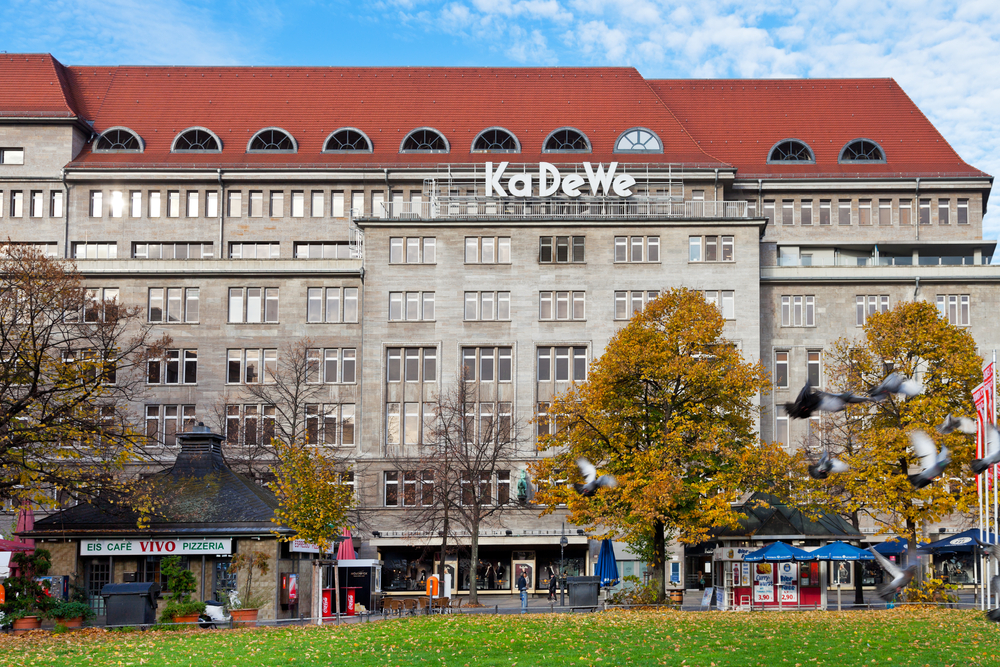
15. Potsdamer Platz
Potsdamer Platz is reached by public transport on the U and S-Bahn lines, just off the Tiergarten. The new downtown centre is a prime business location which successfully merged state-of-the art architecture and real estate potential for the resurging German Capital. And for a touch of glamour the prestigious Berlin International Film Festival, Berlin’s most glamorous calendar event, held in February every year, moved its headquarters here in 2000. The red carpet is rolled out every February for A-list stars outside the Berlinale Palast, where stars, cineastes and public mingle on the new Marlene Dietrich Platz.
Main attractions to be seen while walking around the Potsdamer Platz area include: Debis Tower (Renzo Piano) and the DaimlerChrysler Atrium with its public spaces, including changing art exhibitions and an auto showroom and the artificial water basin; The Sony Centre and Cinema Complex and Film Museum, the Arkaden Shopping Mall (Richard Rogers), a 3D IMAX cinema, Musical Theatre and Casino, and Weinhaus Huth wine merchants the oldest and only surviving original pre World War II building.
16. Olympic Stadium
Berlin’s Olympiastadion and Glockenturm (Olympic Stadium and Bell Tower) was built for the infamous 1936 Olympic Games supervised by Hitler’s Imperial Interior Ministry. The Reich’s Sports Field became a backdrop to national events such as those depicted in Leni Riefenstahl’s controversial films which provided a propaganda campaign to advance National Socialism. Today, the Nazi-era monumentalist stadium and the exhibition in the Bell Tower carry vivid memories of the iconic images of African-American sprinter Jesse Owens whose historic four-medal Olympic victory shook Hitler’s theory of the superiority of the Aryan race.
After WWII, the site was reopened in 1946 when the British troops stationed in Berlin hosted an 8- nation track-and-field competition for Allied Forces soldiers.
A comprehensive renovation and modernization was completed in 2004 creating a global multi-functional sports and events arena which can seat up to 76,000 spectators. On July 9, 2006 Berlin’s Olympia Stadium hosted the FIFA Soccer World Cup final between France and Italy, the world’s most widely broadcast event to date. Madonna chose the Stadium as the venue for her August 2008 Sticky and Sweet Tour Berlin Concert.
17. Save with The Berlin Pass
The Berlin Pass is the complete sightseeing package which includes everything you need for the perfect city adventure, from entry to top attractions and museums to a handy Travelcard for the public transport system. If you are visiting Berlin and want to save time and money on sightseeing in the city, then check out The Berlin Pass.
The Berlin Pass Benefits
- Free Entry to over 50 Museums and Attractions in Berlin
- Free Hop-On-Hop-Off Bus Tour of Berlin
- Free Travelcard for Public Transport in Berlin
- Free 90+ page useful Guidebook
Specially created for visitors to the city, the Berlin Pass will help you discover the best of Berlin whilst saving time and money. Learn more about how you can save with Berlin Pass here.
17. The River Spree
Enjoy a relaxing and informative cruise along the River Spree and take in some of Berlin’s most iconic buildings and monuments. You can experience the best of old and new Berlin with this unique tour – a favourite with Berlin visitors. Berlin Pass holders get a 1 hour circular cruise for free – a saving of €11.50.
Each tour comes complete with expert commentary in English and German to help you identify and learn about the various sights along the river. Enjoy Berlin’s top attractions from a unique perspective all at no extra cost.
Tours depart every half an hour from around 11:00 to 19:00 so there are plenty of opportunities for you to discover Berlin from the River Spree.
19. Free Bike Tour of Berlin
The Berlin Pass includes a free Fat Tire Bike Tour. Explore Berlin with a guided tour of the city on 2 wheels with Fat Tire Bike Tours. Arguably the best way to see the city, the guided tours take you on an informative and fun adventure through Berlin.
The tour guides will be on hand to answer any questions you have about the city as you delve into Berlin’s history and culture. The tours are designed for all abilities and ages with kids bikes included.
Berlin Pass holders can choose from the following tours;
All-In-One City Bike Tour: March 1 – Nov 30th: daily at 11.00, May 1 – Sep 30: daily at 11.00 & 16.00, Dec 1 – Feb 28: Wed & Sat at 11.00
Third Reich / Nazi Germany Bike Tour: April 1 – Oct 31: Wed, Fri, Sun at 10:30.
Berlin Wall & Cold War Bike Tour: April 1 – Oct 31: Mon, Thurs, Sat at 10:30.

20. Berlin Bus Tour
The best way to take in the sights of Berlin is by taking a bus tour of the city. With a Berlin Pass you get an all day hop-on-hop-off ticket for the Tempelhofer buses.
This highly popular bus tour allows you to take in the key attractions and landmarks of the city with expert live commentary in both English and German.
In the summer buses run every 15 – 30 minutes until 17.00. In the winter they run every 20 – 40 minutes until 15.00.
The tour offers great flexibility with 20 different stops including:
• Potsdamer Platz
• Checkpoint Charlie
• Alexander Platz
• Museum Island
• Brandenburg Gate
• Schloss Bellevue
This means you can hop-off at certain stops and visit attractions with your Berlin Pass or you simply relax and enjoy a tour of the city. Your ticket will be valid for the whole day so you can choose how you wish to use it.
You can jump off when and where you want and head to a whole host of top Berlin attractions included with your Berlin Pass. Check out the complete list of attractions in Berlin you can visit for free with a Berlin Pass.
